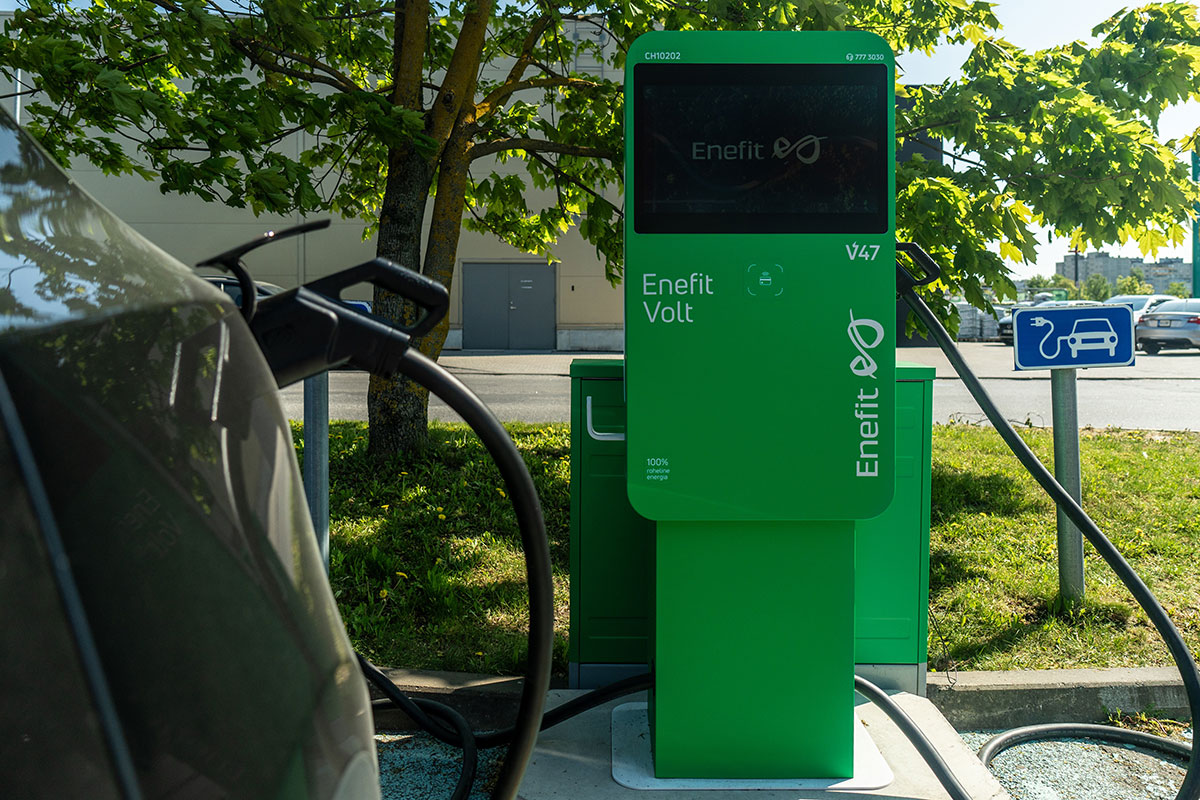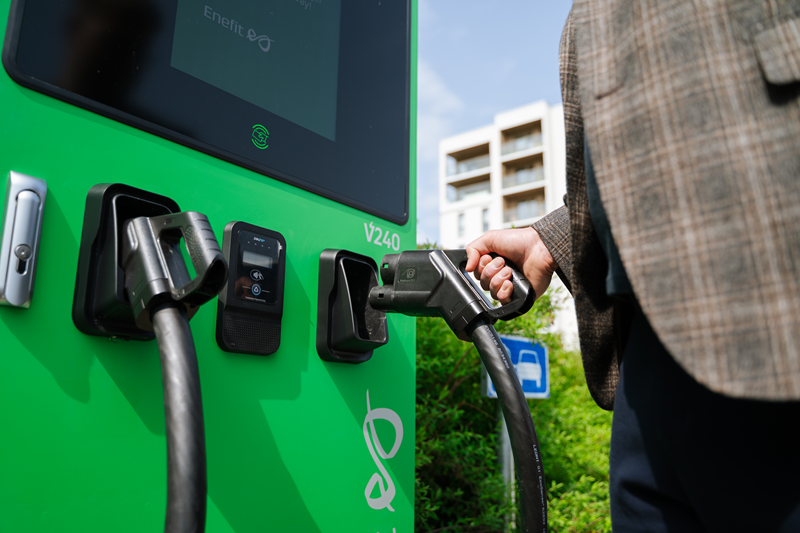The popularity of electric cars has grown significantly worldwide, and in Estonia this trend is similarly on the rise. However, in many countries where the spread of electric vehicles is more extensive, questions are being raised about the ability to keep the electricity network stable.
Enefit, in collaboration with STACC OÜ, has developed an innovative mFRR frequency market forecasting model aimed at ensuring the stability of the electricity network as the number of electric vehicles and chargers continues to increase.
Optimising consumption and potential risks
Many electric car owners prefer to charge their cars at a time when the price of electricity on the exchange is most affordable. However, scheduling charging to align with low exchange prices could, in the long term, impact the balance of the electricity network, as energy consumption is shifted to a different period than initially planned.
Kätlin Värno, Development Manager of Enefit and the leader of the project, explained that electricity sellers make frequency market offers to network operators to ensure the stability and reliability of the network. ‘If electricity sellers cannot accurately forecast consumption, their imbalance costs increase. Consequently, the electricity price may rise, as companies try to cover the costs resulting from forecasting errors,’ she said.
However, Värno confirmed that such a problem does not currently exist in Estonia. ‘Currently, there are approximately 7,500 electric vehicles on our roads. Although the number of electric vehicles and home chargers is estimated to reach 200,000 over the next ten years, there is no significant risk to the stability of the electricity network at least in the near future. In other words, even if all electric vehicle owners decided to charge their vehicles during the cheapest price hour, it would not critically impact the balance of the network.’
Solutions for managing future consumption patterns
In order to ensure the stability of the electricity network in the future, one solution is to control the consumption of electric car chargers. This means that electric vehicle charging would not occur randomly or be controlled manually by the owner; instead, chargers would be connected to a system capable of optimising consumption and charging schedules, taking into account both exchange prices and participation in frequency markets.
‘This way, charging times and consumption volumes can be shifted, avoiding peak loads and reducing imbalances in the electricity network. At the same time, it is possible to ensure that the car has reached the desired state of charge by the specified time, and this at an even more favourable charging price,’ said Värno.
Such solutions will become increasingly available in the future, as the minimum threshold of 1 MW required for trading on frequency markets is already almost achievable with home chargers. If an electric vehicle owner decides to purchase a charger, Värno believes that it would be reasonable to consider a comprehensive solution where charging sessions are optimised not only for the exchange price, but also taking into account the frequency markets. For Enefit Volt customers, this means even better opportunities to reduce charging costs with the already familiar charging service.
More accurate imbalance forecast and a more stable electricity market
The model created by Enefit and STACC continuously analyses electricity consumption for the next four hours, helping to predict imbalances even more accurately in the future. The more precise the forecast, the better electricity producers will be able to schedule when to offer reserve capacity to the market.
‘The ability to direct production to periods when less electricity is produced than expected helps smooth out price fluctuations and, in the bigger picture, creates a more stable and predictable electricity market,’ said Värno.
‘From the future perspective, and especially with the continued growth in the number of electric vehicles and home chargers, the need for smart and efficient solutions will only increase. The model developed as part of the EVFlex or e-mobility flexibility project, co-financed by the Estonian Business and Innovation Agency’s programme for applied research, is precisely one of these solutions,’ she added in conclusion.



